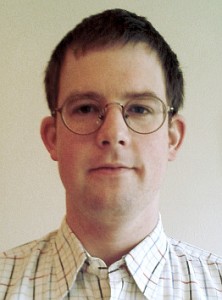Hazard Identification – an interview with Pieter Groenemeijer
 A main part of the RAIN project is the work package on “Hazard Identification”, led by Pieter Groenemeijer at ESSL – European Severe Storms Laboratory. We have interviewed Pieter on the approach to hazard identification that will be followed and how stakeholders will be involved in this process.
A main part of the RAIN project is the work package on “Hazard Identification”, led by Pieter Groenemeijer at ESSL – European Severe Storms Laboratory. We have interviewed Pieter on the approach to hazard identification that will be followed and how stakeholders will be involved in this process.
What are the main challenges you expect to encounter in the “Hazard Identification” process?
A challenge is to identify a large number of relevant stakeholders, in particular the operators of critical infrastructure such as railway and motorway operators as well as telecommunication and energy companies. We need to convince them not only that we need their information for the RAIN project, but also that they will in the end benefit from our results.
Do you already know which weather phenomena RAIN will analyse more in detail?
The short answer is: not yet. We have started to look at all hazards with an open mind. We first try to identify the weather phenomena that have caused big impacts in the recent past. For example, we know that floods cause a lot of damage across Europe on a regular basis and this phenomenon will certainly receive a lot of attention in the RAIN project as one might have guessed from the project’s name. However, we will also consider rare events that may have great consequences, ranging from local intense events like tornadoes to a scenario of very widespread snowfall in an exceptionally cold winter. Although these events are less likely to happen, once they occur they can have big impacts.
What approach will you be following through the “Hazard Identification” process?
Our work consists of a number of steps. After making a list of almost all weather events we could imagine, we are now holding interviews with stakeholders. Such stakeholders are, for example, rail infrastructure managers and motorway operators or telecommunication and energy companies. We are asking them to describe how extreme weather impact them, how they are prepared to cope with them and to what extent early warnings can help them. At the same time, we ask weather services about their capabilities to provide warnings for a given weather phenomenon. Hazard identification also implies that we should be able to establish from what level of intensity and extent the events typically start to cause significant impacts. In order to do so, several new methods are being developed to identify damaging wind storms, heavy rainfall episodes, winter weather and hazards related to thunderstorms. In addition, our colleagues at the TU Delft will improve their models on flood defence failure. As a last step, we will apply these new methods to data from climate models and obtain an overview of where in Europe individual weather phenomena are more and less likely to happen, and whether any trends can be detected using climate predictions.
How will you deal with regional differences in climate and vulnerability across Europe?
Indeed, regional differences are important. For example, we can expect northern Europe to be more resilient to winter weather than most areas further south that experience this weather less frequently. In order to take this into account, we will interview stakeholders from various regions of Europe and will consider the regional variability in climate by using regional climate models that cover Europe as a whole. By applying new methods to these models, the project partners will both study the present frequency of extreme weather events and identify any future trends.
Are you planning to involve stakeholders from the transport, energy and telecom sectors in the hazard identification process? How will this happen?
Yes, the involvement of stakeholders is critical to get the complete picture of how the extreme weather events affect various types of critical infrastructure and learn which steps have been taken to mitigate these impacts. We also need to learn from them how they believe they would be able to prepare better for extreme weather, for example by better early warning systems. In order to do so, we are interviewing stakeholders and will interact direct with them at a workshop in Berlin on 27th February 2015.